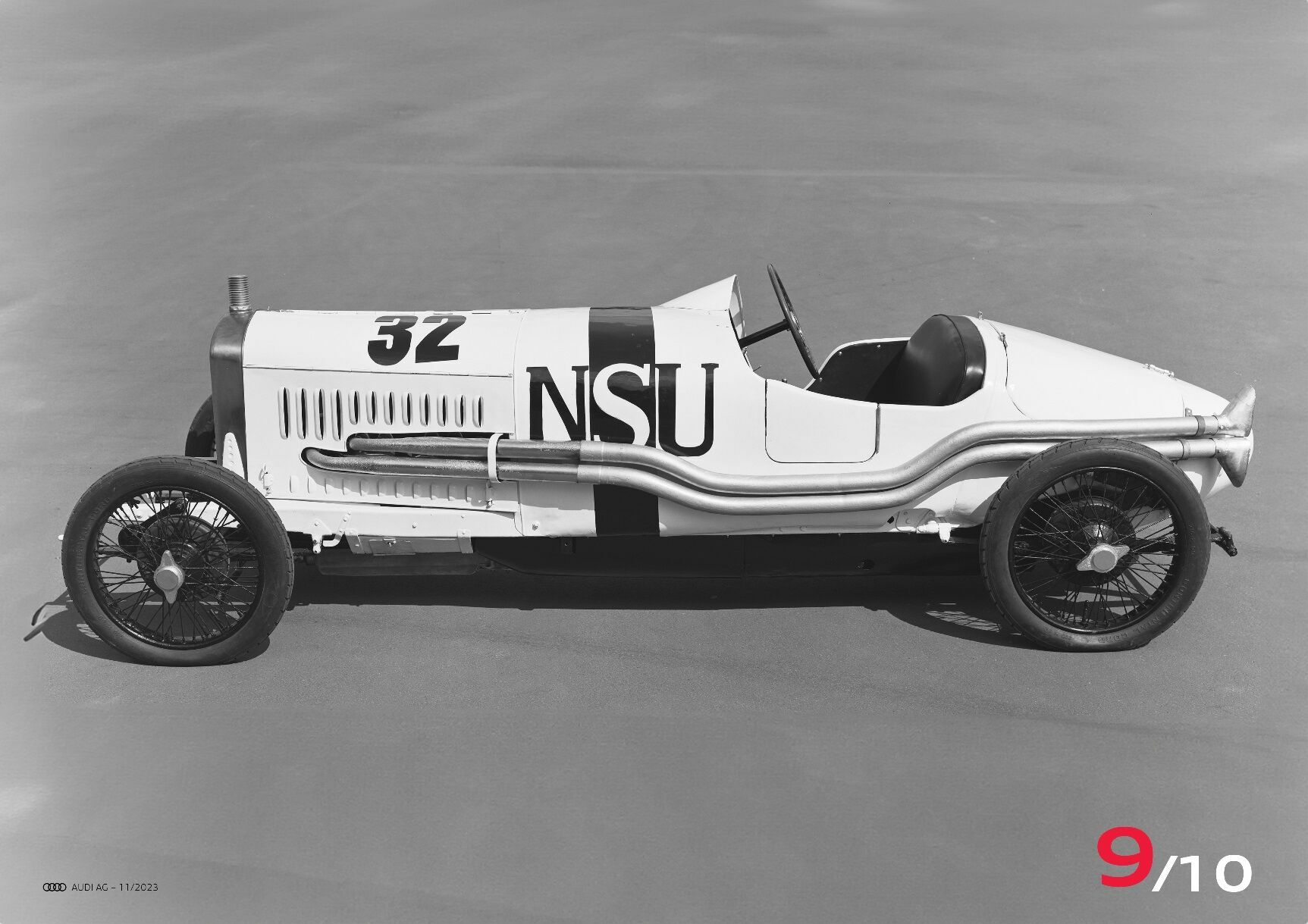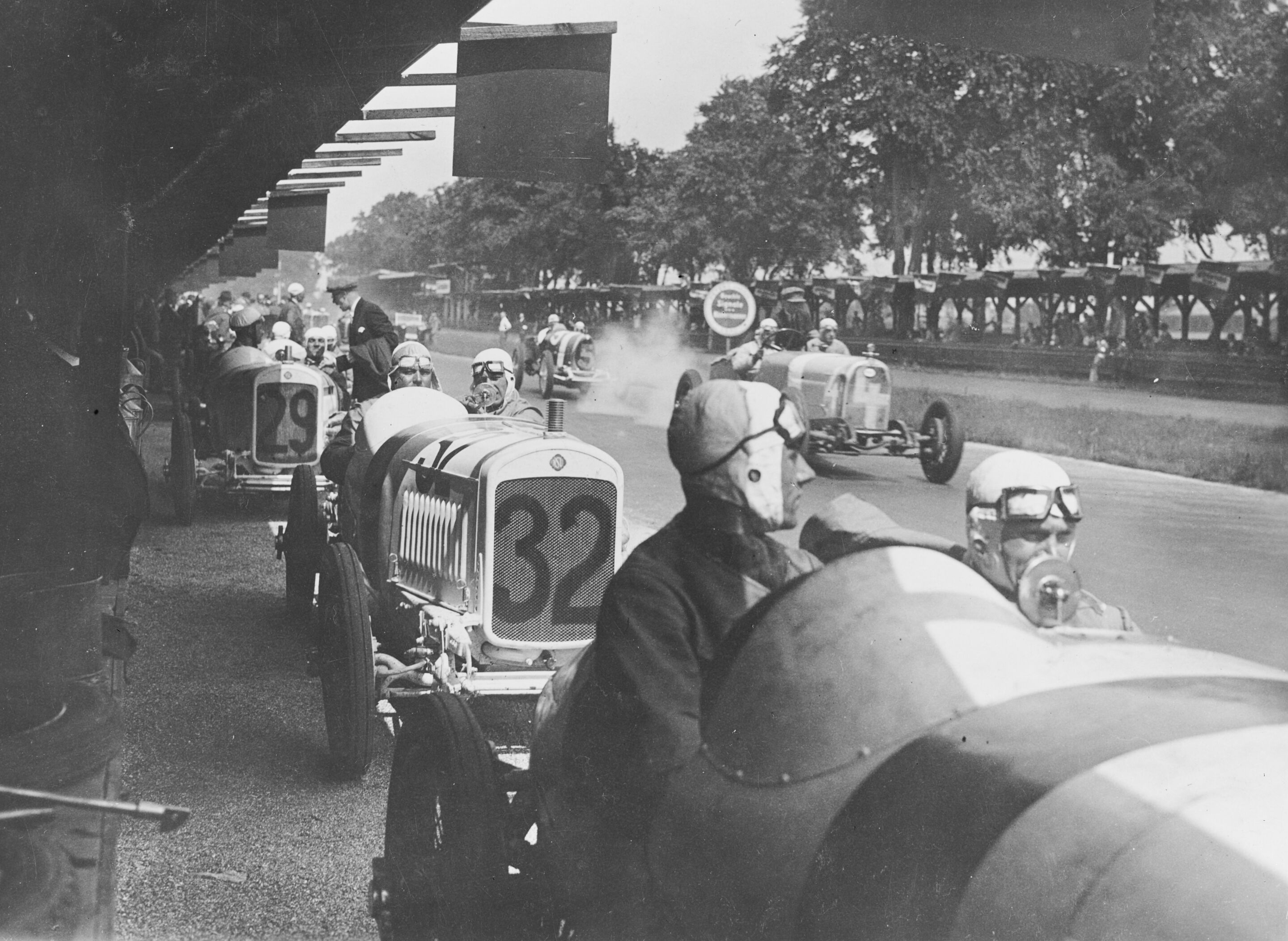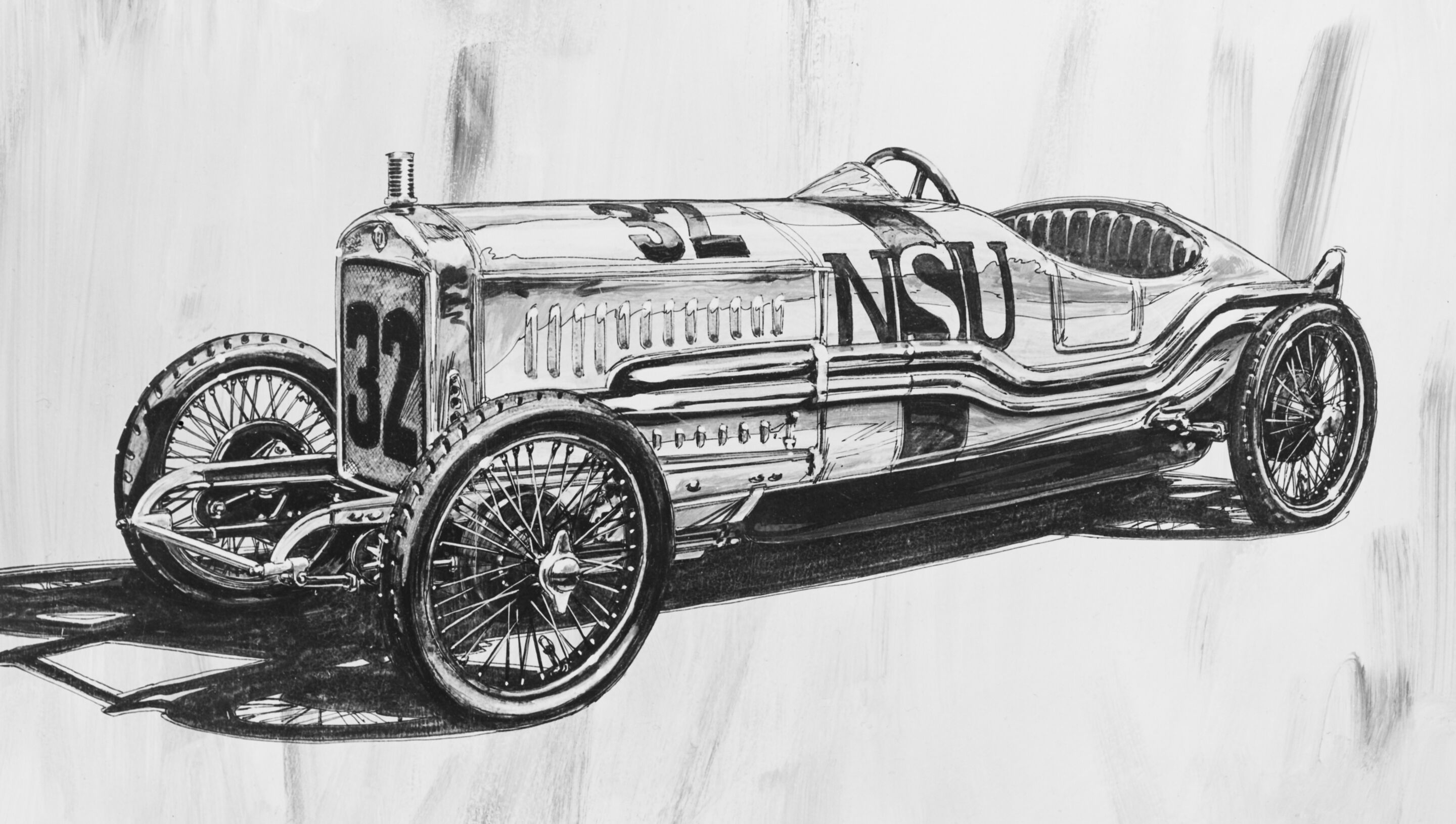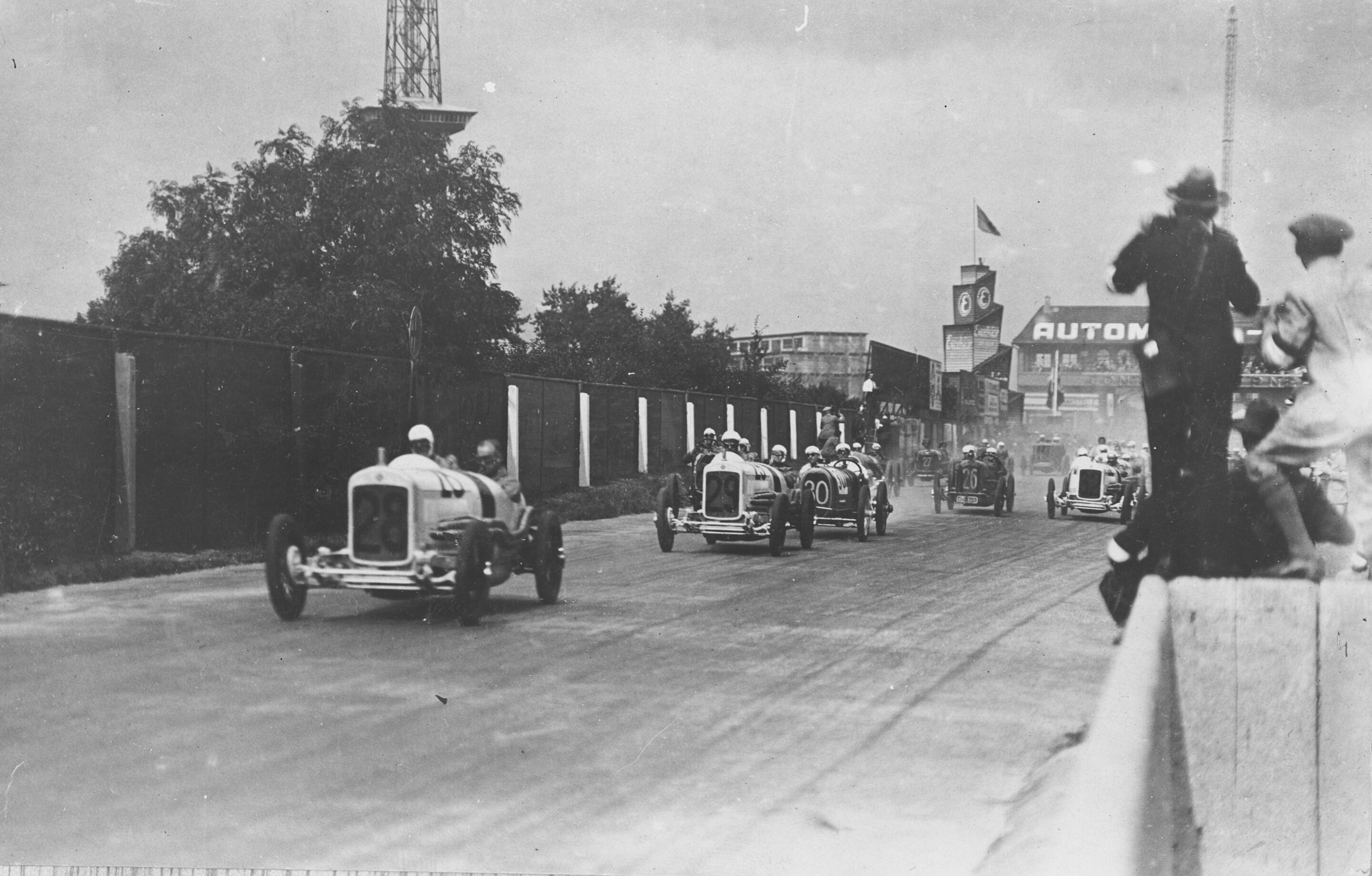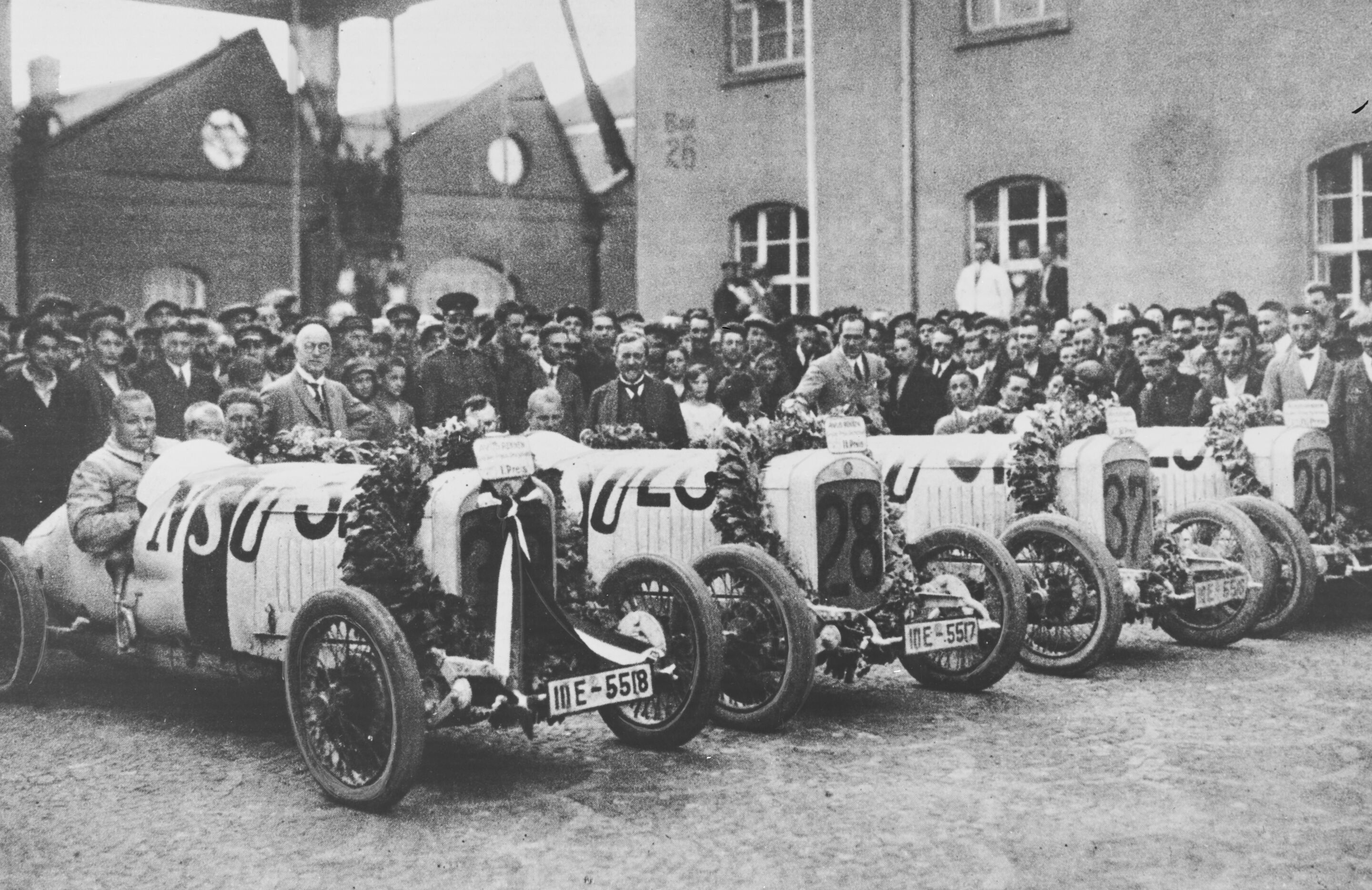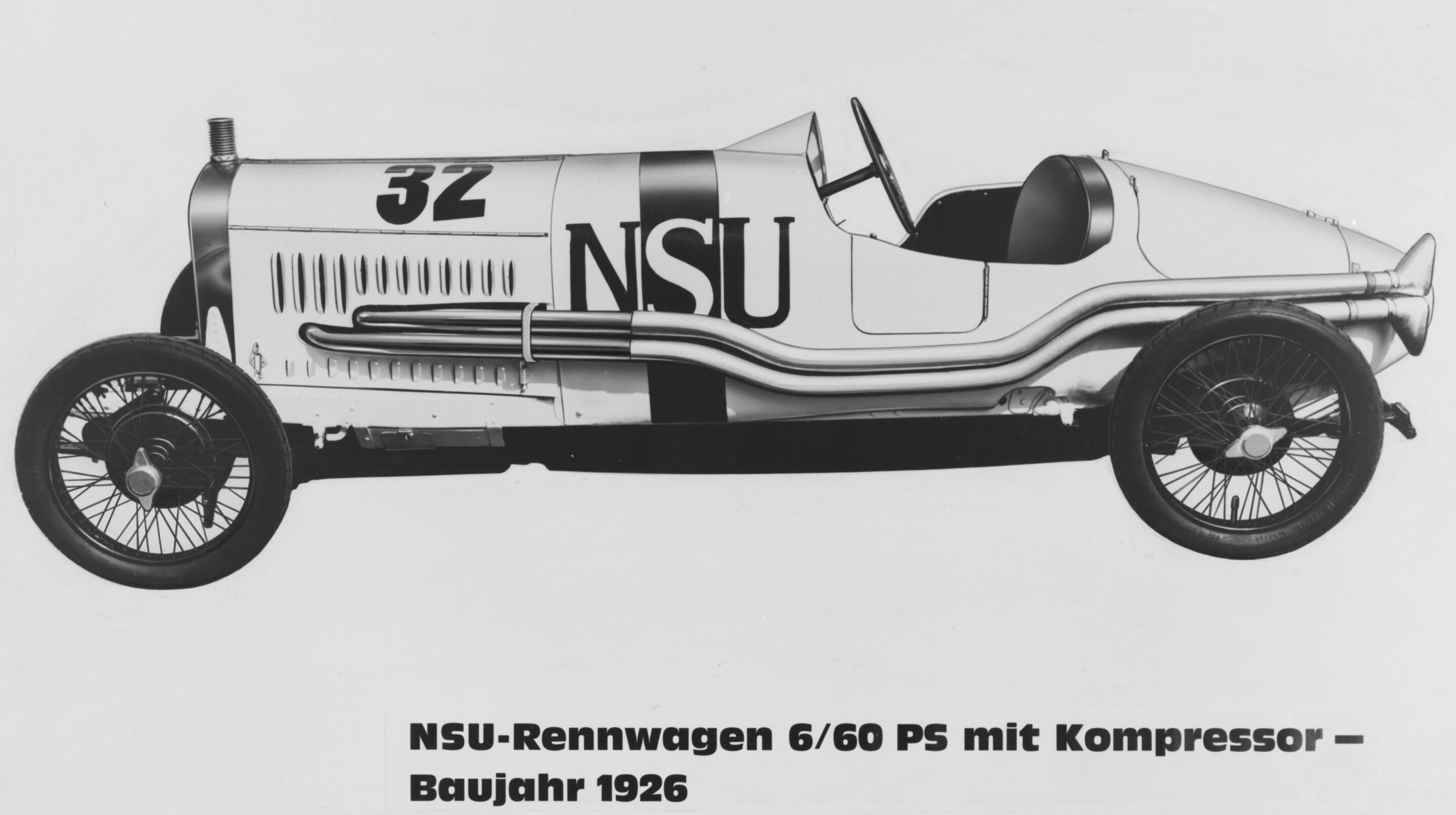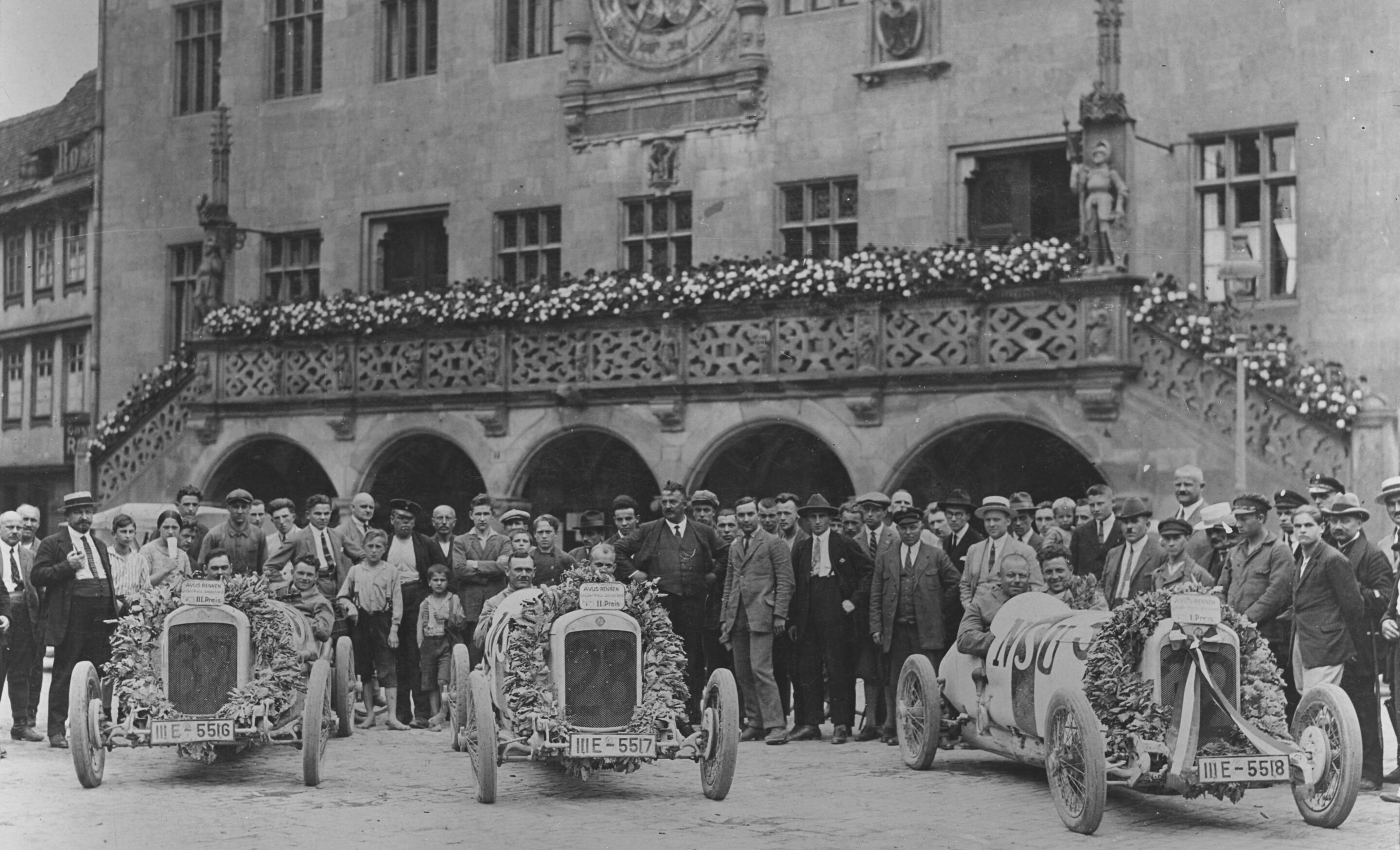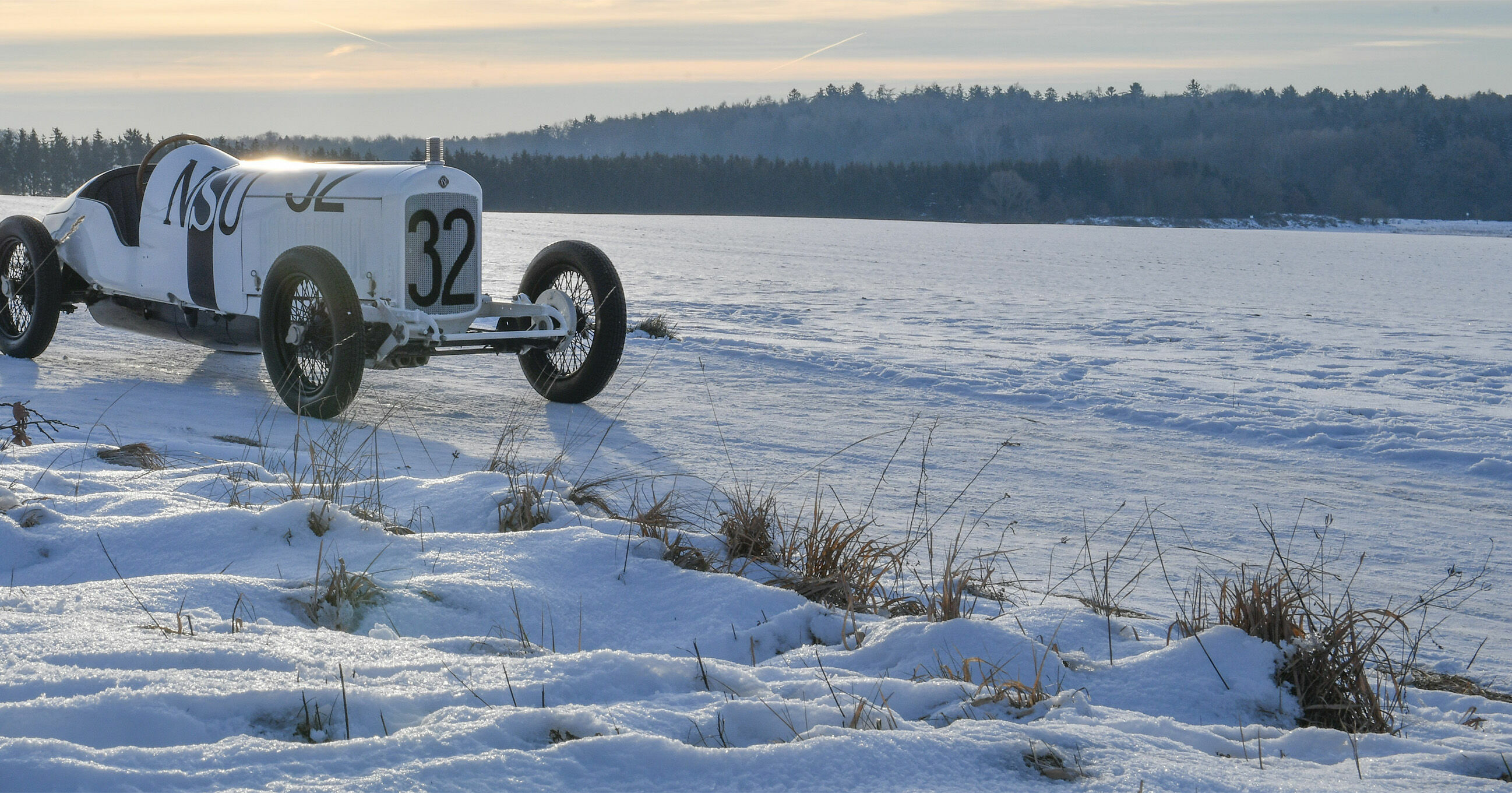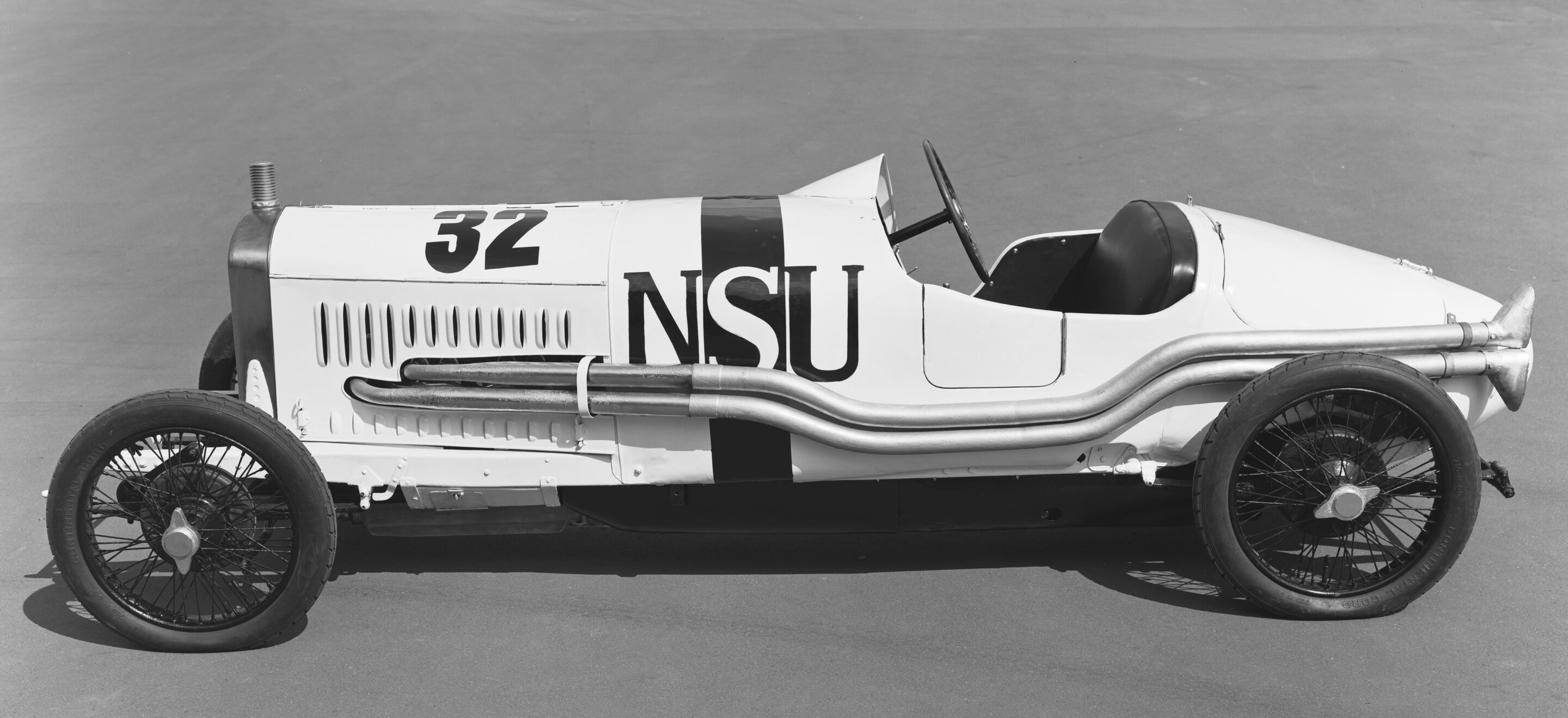Quadruple victory for NSU Type 6/60 PS racing car at the German Grand Prix on the AVUS circuit
- The first six-cylinder engine from Neckarsulm was used for racing in 1926
- 150 years of the traditional brand: Series with classics and one-of-a-kinds from NSU’s model history – Episode 9
The NSU brand and motorsports are an alliance with tradition, not to mention numerous highlights and, above all, emotions. A quadruple victory by the white supercharged six-cylinder cars in their class at the first German Grand Prix on the AVUS circuit in Berlin in 1926 stands out in the story of NSU racing between the two world wars. In this ninth episode on the history of NSU to mark the brand’s 150th anniversary, Audi Tradition presents the pre-war NSU Type 6/60 PS racing car.
NSU participated in international automobile races as early as 1908. The company’s participation in the 1909 Prince Henry Tour — and numerous endurance and reliability races — was a great success. After World War I, the Automobil-Verkehrs- und Übungsstraße (AVUS) opened in Berlin in 1921. The circuit, which was closed to public traffic until 1940, served as the first race and test track in Germany to demonstrate the competitiveness of the country’s automotive industry. A “small” NSU, the NSU 8/24 PS, won its class at the first AVUS race in September 1921. The basic design of the racing version was the same as the production model; all the Neckarsulm-based company had to do was modify the car slightly to create an open-top racing two-seater.
The company, then known as Neckarsulmer Fahrzeugwerke Aktiengesellschaft, returned to the drawing board and developed the NSU Type 6/60 PS specifically for racing. This racing car was NSU’s first six-cylinder model. The “6” designated its “tax horsepower”, which was necessary for classification in its tax class. The open two-seater had an output of 60 PS and weighed 830 kilograms (1,830 lb) with a top speed of 175 km/h (109 mph). It was built in 1925 and 1926 – regulations of the time meant it came only in white, the designated color for German racing.
In 1925, the Neckarsulm-based company entered one of the new six-cylinder supercharged racing cars in the 450-kilometer International Taunus Race – and won. The following year, NSU celebrated a highly acclaimed quadruple victory with the NSU Type 6/60 PS at the first “1926 German Grand Prix” in the 1.5-liter class at the AVUS on July 11, taking fifth place overall. Organized by the AvD, the Automobile Club of Germany, the Grand Prix was the motorsport event of the year in 1926, with about a quarter of a million spectators making the pilgrimage to the AVUS. They were rewarded with a race that is unsurpassed for drama and tragedy. During training, a fatal accident occurred. The race was plagued with heavy rain, making the track increasingly slippery lap by lap. The number of retirements increased, and in the end, only 17 cars made it to the finish line.
The secret to the success of the NSU racing cars was their new in-line six-cylinder engine: The engine proved to be robust and reliable over the entire distance of more than 400 kilometers – and so the first four places in the “F” class, the class up to 1,500cc, went to NSU. Back home in Neckarsulm, the victorious team was given an enthusiastic welcome at the NSU plant: Employees and then directors Fritz Gehr and Georg Schwarz congratulated the drivers, who then took their racing cars on a publicity tour to Heilbronn and Stuttgart. The success of the NSU Type 6/60 PS on the racetrack led to the decision in Neckarsulm to develop a new car that would fit into the then-popular 6 PS tax class, the NSU 6/30 PS. The six-cylinder engine derived directly from a racing engine was a real novelty. The new car was delivered to dealerships at the end of 1927. But it was only built until the end of 1928. After that, NSU ceased production and concentrated on its technological successor, the NSU Type 7/34 PS.
NSU Type 6/60 PS: One of the rarest vehicles in the Audi collection
“It is a great stroke of luck and a story in itself that we now have one of these rare 1926 Grand Prix cars in Audi’s historical vehicle collection,” says Timo Witt, who is responsible for the collection at Audi Tradition. One of the NSU 6/60 PS racing cars found its way to Berlin by unknown means, where a car enthusiast bought it in 1931 for 150 reichsmarks. On June 4, 1932, according to information on the vehicle’s original tax card, the Berliner was permitted to drive the former racing car on public roads. However, the authorities revoked their permit in 1937, believing the vehicle to be too loud. And so the owner of this rarity set to work: With plans to overhaul the car, he dismantled the NSU 6/60 PS.
The project came to a halt with the outbreak of WWII. In 1945, Russian soldiers discovered the car’s heap of parts and wanted to confiscate it. However, they quickly realized that assembling the vehicle was too complex a task. Thus, the NSU 6/60 PS remained in Germany in its dismantled state. The owner of the rarity continued working on restoring it but ultimately could not get a road permit. The Berliner kept the former racing car in his garage for many years until he decided to sell it in 1965. He wrote to NSU that he wanted to return the former racing car to the plant. A trade was quickly agreed upon: The savior of the unique vehicle, so valuable to NSU’s racing history, was given a brand new NSU Type 110. Back at the plant, it took trainees five months to restore the supercharged racing car. They removed the fenders and lights, restoring the bodywork, which had been painted red at some point, to its original racing white. Today, this NSU Type 6/60 PS is one of the oldest and rarest cars in Audi’s historical vehicle collection.
Each month during the year of NSU’s 150th anniversary, Audi Tradition presents a different NSU model, including brand classics on both two and four-wheels, prototypes, and one-of-a-kind models. If you want to delve deeper into the complex product history of the traditional NSU brand, we recommend the Audi Tradition Edition book “NSU-Automobile. Typen – Technik – Modelle”, written by Klaus Arth and published by Delius Klasing Verlag.
